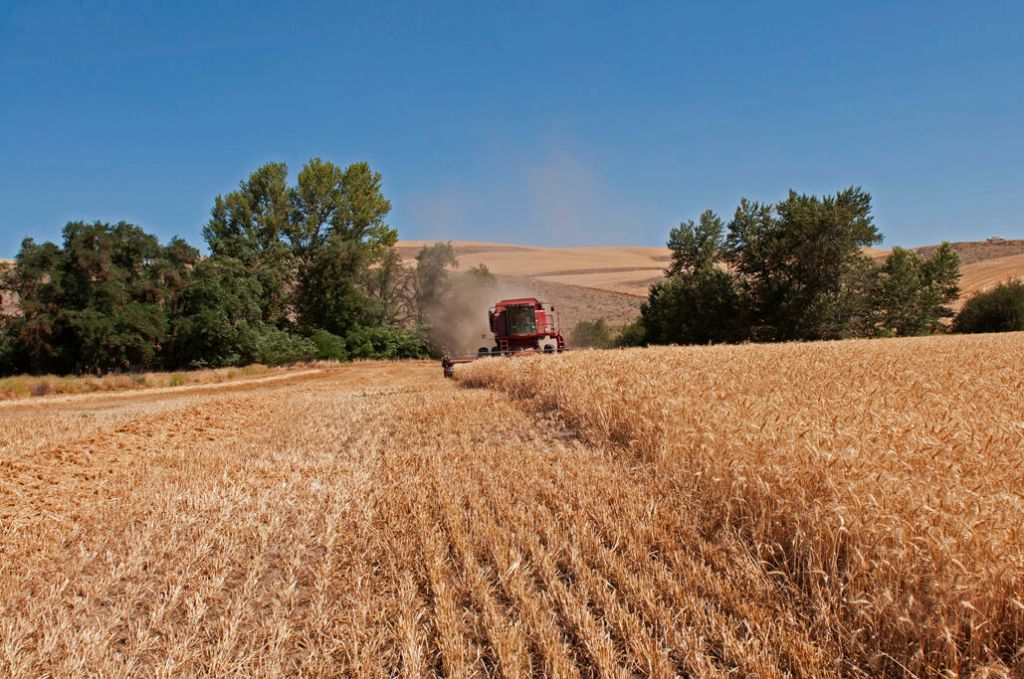Can Oregon protect its farmland against rapid development?
Published 7:00 pm Tuesday, January 23, 2024

- Transfers to farmland to heirs create tenuous periods of ownership that can be exploited by developers
SALEM — Farmland in the United States is under threat. About 31 million acres, a land mass equivalent to the size of New York state, has been lost to urban expansion in the last 20 years. By 2040, nearly 18 million more acres could be lost to development.
Trending
“Without farms, there’s not only no food, but there’s no future. We need farmland to feed us and sustain our economy — but also to help restore our planet,” American Farmland Trust president John Piotti said.
Urban sprawl has been swallowing farms around the peripheries of our nation’s cities.
Oregon has a strong history of protecting its farmland, creating a leading land-use planning system to protect open spaces.
Trending
However, with growing pressure on land to both house and feed an expanding population, the state’s lawmakers are being pulled in multiple directions.
Now, a boundary isn’t enough. Farmland advocates must work across the rural-urban divide, tackling urban housing policy in the process, to protect the future the state’s food systems.
Rural gentrification
Rural America is experiencing a real estate crisis. Low density rural development and urban sprawl into rural areas continues to drive up land prices.
In agricultural areas, the conversion of farmland to non-farm uses deters the extended life of irrigation districts and processing facilities.
As profitability decreases, farmers are more likely to divide and sell land for development, deepening the cycle of conversion and slowly reducing the amount of farmland nationwide.
“It’s what we can call rural gentrification,” Brooks Lamb, a land access specialist with American Farmland Trust, said.
Rising land prices and declining agricultural districts further restrict young farmers and underrepresented groups like women and BIPOC from entering the industry. Thriving agricultural food systems require a critical mass of farmland, and this land-intensive industry is framed by issues of equity, access and entry.
Roughly 370 million acres of farmland across the United States will change hands as the aging population of farmers retires in the next 20 years.
In Oregon, nearly two-thirds of the state’s agricultural land will change ownership in that time — farm owners aged 55 and older control 64% of agricultural land in the state, according to an Oregon State University study titled “The Future of Agricultural Land.”
Land transfers to heirs create tenuous periods of ownership that can be exploited by developers. In declining agricultural economies, property heirs are more likely to sell or be bought out by developers.
Some become victims of “forced partition sales.” Heirs can be bought out by a developer who then becomes an equal co-owner and forces the entire parcel to be put up for sale at a public auction for pennies to the dollar of the market rate.
SB 100 and contemporary challenges
In the 1970s, Oregon created one of the strongest land-use planning systems in the United States. Senate Bill 100 was passed to create urban growth boundaries designed to protect Oregon’s environment and open space.
Its secondary goal was to continually reevaluate housing production to meet statewide needs. This was an important tool for the conservation of Oregon’s farms, forests, natural resources, economic development and open spaces.
However, single-family zoning requirements have undermined both urban and rural housing affordability and land access, creating low-density expansion out of urban growth boundaries while simultaneously failing to build enough units to house a growing population.
While SB 100 has been influential in slowing suburban expansion, it failed to codify funding pathways for increased compact housing production.
As state policymakers grapple with how to meet housing demands without these avenues, the urban growth boundary is being chipped away.
Last year, Oregon’s controversial House Bill 3414 was narrowly defeated. If passed into law, the bill would allow cities to unilaterally expand urban growth boundaries.
Furthermore, while SB 100 remains a strong conservation tool, it has often failed to protect the state’s most valuable farmland, especially on the peripheries of cities.
Expanding residential development to the outskirts of cities through single-family homes rapidly raises the cost of living in rural areas while simultaneously exacerbating inequality in cities.
Now, Oregon is experiencing a statewide housing shortage.
People in all Oregon counties are concerned about affordability and homelessness. While Portland housing prices are expected to begin a slight decline from their recent historic heights, prices for Oregon farmland have continued to rise year after year.
Oregon has continually ranked at the top of federal measures for statewide homelessness.
In recent years, Oregon has made monumental moves to reform city zoning laws.
In 2019, it became the first state in the country to do away with single-family zoning requirements and has begun funding city-housing strategies to increase housing production of multi-use housing.
However, rural areas haven’t been allocated the same funding to create similar housing strategies.
Many rural county governments lack the resources to protect agricultural economies to resist the development of prime farmland.
How then should state, county and municipal governments create measured policies that don’t take productive farmland out of commission and decrease the expansion of single family-homes?
Advocates on concurrent fronts
Beneath the glow of warm lighting of Helioterra Winery in Southeast Portland, Oregon Agricultural Trust partners and farmers celebrated a successful 2023 year over locally sourced appetizers and vibrant Pacific Northwest wines.
Among many of its successes was work done to petition local, regional and national governments for more funding to protect agricultural land.
In Washington, American Farmland Trust has set a model of holistic urban sprawl prevention policy: working to reduce development pressure by advocating for middle housing options within Seattle.
By promoting affordable high-density housing in cities, American Farmland Trust is attempting to build bridges across the rural-urban divide by increasing affordable housing.
Land trusts are working to help educate farmers about the importance of succession planning.
Many use the “Buy, Protect, Sell” model to place easements on farmland to permanently remove development rights. They rely on public outreach to inform agricultural land owners about the importance of stewarding farmland, and how one plot of land sold can become millions of acres lost.
The nonprofit 1,000 Friends of Oregon spearheads the Portland for Everyone campaign.
The watchdog organization was formed by Gov. Tom McCall, who was integral to the bipartisan push behind SB 100.
In the past, 1,000 Friends of Oregon has collaborated with LandWatch Oregon and American Farmland Trust for the Portland for Everyone program. Continuing this overlap and drawing in more agricultural land trusts to protect the urban growth boundary is a natural coalition.









